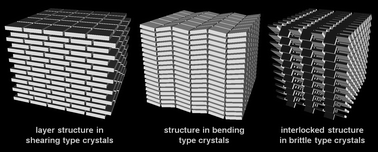Mechanical properties of molecular crystals—applications to crystal engineering
Abstract
We present an overview of very recent advances in the understanding of structure–mechanical property correlations in molecular crystals. After the introductory part on some classical two-dimensional structures from the literature, we survey recent reports (mostly since 2005) pertinent to the mechanical properties of molecular crystals studied by application of external stress using a range of techniques. This includes both qualitative (shearing, bending and brittle crystals) and quantitative (nanoindentation, powder compaction and high-pressure) studies on establishing the correlation of anisotropic mechanical behaviour with the underlying crystal structure. Section 9, emphasizes on the usefulness of crystal engineering approach to improve the mechanical properties of molecular crystals, particularly the active

- This article is part of the themed collections: New Talent and A celebration of 25 volumes of CrystEngComm

 Please wait while we load your content...
Please wait while we load your content...